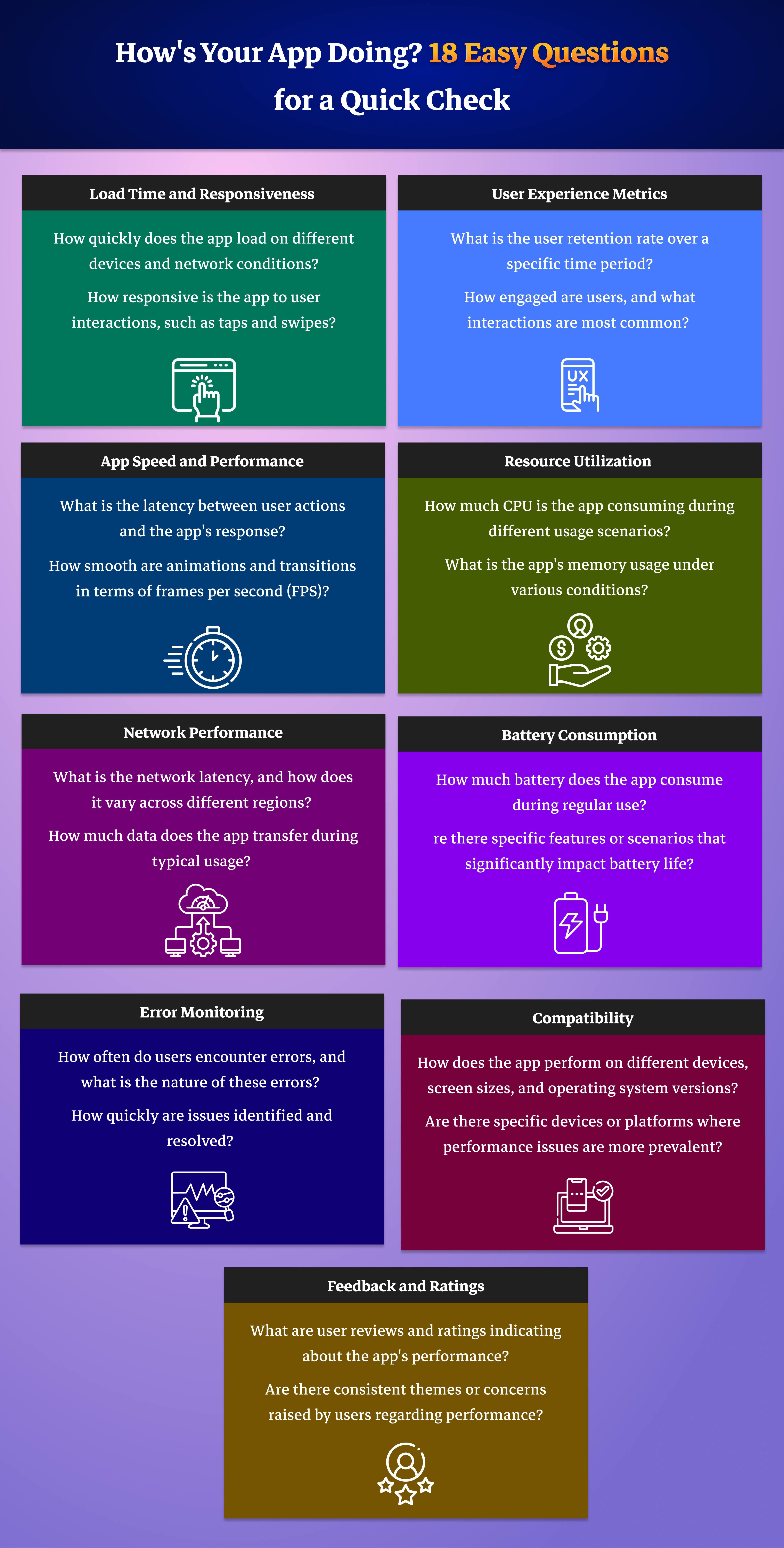
How To Measure the Performance of a Mobile App in 2023?

Navigating the performance of a mobile app might be a tiresome task. However, it is essential to test how well a mobile app works is super important for businesses to stay ahead. Making sure the app works smoothly is a big part of whether it’ll be successful or not.
After developing and launching an app, business owners might think it is the ending phase. But, in reality, it is not a fact. As an app development process takes a lot of time and costs to transform into reality, it is essential to measure and track the performance of your mobile app. The best possible way to do this is to measure different metrics to evaluate how your app is performing.
Check out this blog to gain insights on how well the app is doing by using mobile app metrics. Understanding these mobile app metrics can help developers and businesses make smart choices to make users happy. Hold your horse throughout this blog to learn a bunch of significant mobile app metrics to consider while measuring the performance of your app. Before diving into the topic, take a sneak peek into an overview of mobile app metrics.
What is Mobile App Metrics?
Mobile app metrics is a variety of measurement made on a mobile app to inspect the performance of the mobile app. It is a process of analyzing the behavior and feedback of app users.
Why App Performance Metrics Matter?

1. Keeping an Eye on Technical Performance
App metrics help track technical aspects like how fast the app responds, loads, and error rates. This information is crucial for developers and product teams to identify and fix any issues, ensuring the app runs smoothly.
2. Enhancing User Experience
Metrics provide insights into user behavior, such as time spent on different pages and popular features. This data helps product teams understand how users interact with the app, allowing them to make informed changes to enhance the overall user experience. Checkout the latest blog on ultimate guide to improve the user experience of a mobile app.
3. Spotting Areas for Improvement
Analyzing metrics is key to identifying areas that need improvement. For instance, if a feature is rarely used, metrics can reveal why and help decide whether to improve it or remove it. This ensures efforts are focused on aspects that matter most to users.
4. Data-Driven Decision-Making
App metrics provide objective data for making informed decisions about app development and optimization. This helps in prioritizing efforts on areas that will have the most significant impact on the app’s performance and success.
5. Improving User-Friendliness
Understanding how users interact with the app guides product teams in making it more user-friendly. Insights such as time spent on pages and feature usage help in tailoring the app to better meet user expectations and preferences.
How do you measure mobile app performance?
User Growth Rate
The user growth rate is like checking how healthy your app is. If it’s going down, there’s a problem. Find out why people are leaving, fix it. If it’s going up, figure out why – is it steady or happening because of certain promotions?
Mobile Downloads
This is the OG metric for apps. If no one is downloading your app, you won’t need to worry about anything else because you won’t have any users!
App Retention Rate
This tells you how many people stick around after downloading. If they’re leaving, find out why and fix it, because constant crashes or freezing will make users drop your app. See what Google Play says about Android Performance Tuning.
Session Length and Depth
Session length is how long users spend in your app, and session depth is how much they explore. Longer sessions and deeper exploration mean engaged users, which is good.
Daily and Monthly Active Users
Track how many unique users engage with your app daily and monthly. It helps understand user engagement, growth, and retention rates.
App Churn Rate
This is the percentage of users who uninstall or stop using your app. Minimize churn by understanding which part of the user journey causes dissatisfaction.
Average Revenue Per User (ARPU)
It’s the average money you make from each active user. Important for understanding how much each user contributes to your revenue.
Lifetime Value (LTV)
Lifetime Value estimates how much money a customer brings to your business over their entire relationship with you. It’s vital for understanding the value of a customer.
Customer Acquisition Cost (CAC)
Customer Acquistion Cost tells you how much it costs to get a new customer. It’s calculated by dividing the total sales and marketing spend by the number of new customers.
Cost Per Acquisition (CPA)
CPA is the total cost for a customer to complete a specific action in your app. It’s a common metric in marketing.
Conclusion
Remember, keeping track of how well your mobile app is doing is an ongoing job. As technology changes, what users want can shift, and new issues may pop up. It’s super important to always keep an eye on how your app is performing, adapting to what’s new and what users need. If you make measuring and improving your app’s performance a priority, you can create an app that not only meets but goes beyond what users expect. Making sure your app is smooth, quick, and dependable will boost how much users like it, stick around, and in the end, make your app successful.
iSQUARE is a top-notch custom mobile app development company for developing mobile apps. At iSQUARE, we don’t just create awesome apps but also understand how crucial it is to check and improve how well an app works. With our expertise in this field, we make sure every app they create goes through thorough testing using advanced tools and techniques. So, if you’ve got cool app ideas, iSQUARE is your ideal partner to build your dream app.













